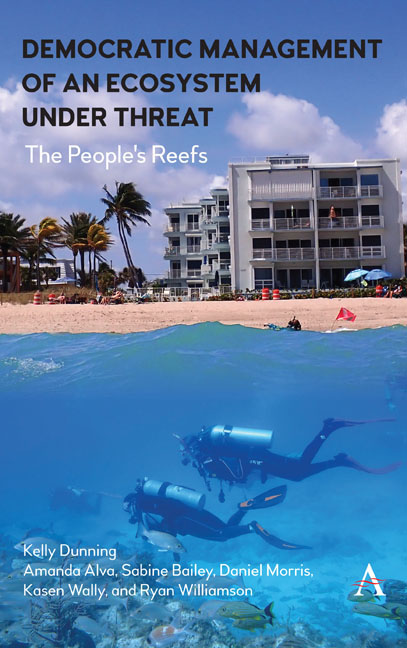Book contents
- Frontmatter
- Contents
- Miscellaneous Frontmatter
- Part 1 The Climate Change Challenge to Coral Reefs That Will Require Conservation Theory And Practice to Evolve
- Part 2 Case Studies
- Part 3 Summary and Conclusions
- Appendix Chapter 5
- Appendix Chapter 6
- Appendix Chapter 7
- Appendix Chapter 8
- Appendix Chapter 9
- Index
Chapter 4 - Approaches to Coral Reef Management
Published online by Cambridge University Press: 28 February 2024
- Frontmatter
- Contents
- Miscellaneous Frontmatter
- Part 1 The Climate Change Challenge to Coral Reefs That Will Require Conservation Theory And Practice to Evolve
- Part 2 Case Studies
- Part 3 Summary and Conclusions
- Appendix Chapter 5
- Appendix Chapter 6
- Appendix Chapter 7
- Appendix Chapter 8
- Appendix Chapter 9
- Index
Summary
In the face of rapid global environmental change, there has been an interdisciplinary movement among scientists to reconsider how ecosystems are managed. Governing in the Anthropocene, or the age in which human activity has become the dominant influence on the Earth's climate and environment, comes with novel considerations. As the human population continues to grow, interactions between people and the environment are becoming more common and more complicated. These interactions are often described as socio-ecological systems, or the relationships between linked human and natural systems (Folke, 2006; Folke et al., 2005; Ostrom, 2009; Walker et al., 2004).
Due to the fact that coastal communities rely on coral reef ecosystems, the relationships between them are important to consider as a single socio-ecological system (Cinner et al., 2012; Cinner et al., 2016; Kittinger et al., 2016). This means that impacts to the reef, through human action or natural change, can come back to impact human systems like economies and cultures. For example, fishermen access a reef for different species, such as conch, lobster, snapper and grouper. These different anglers might overlap in their target areas, limiting the ability of other reef users, such as divers, to view these species. People looking to develop stretches of the coastline for condos may clear coastal dunes, resulting in cloudier water that inhibits both angler and diver activity. A member of the public that may never even see a reef firsthand might place a high value on a healthy reef merely existing so that they can be passed down to their children. Decision-makers are tasked with understanding these overlapping uses, and designing management systems to balance uses while maintaining essential features of the reef ecosystem.
Dr. Elinor Ostrom, a pioneer of the socio-ecological system concept, likens the complexity of a resource system to the complexity of a biological organism, where many subsystems interact to produce feedback loops which compose a greater whole (Ostrom, 2009). While the idea of a socio-ecological system was initially developed to help explain the interconnected nature of people and their environment, it has since become a staple within the field of natural resources management being applied to topics as diverse as cattle ranching, forestry and coral reef conservation (Berkes et al., 2000; Fischer, 2018; Herrero-Jáuregui et al., 2018; Pendleton et al., 2016; Walker et al., 2004).
- Type
- Chapter
- Information
- Democratic Management of an Ecosystem Under ThreatThe People's Reefs, pp. 27 - 44Publisher: Anthem PressPrint publication year: 2023

